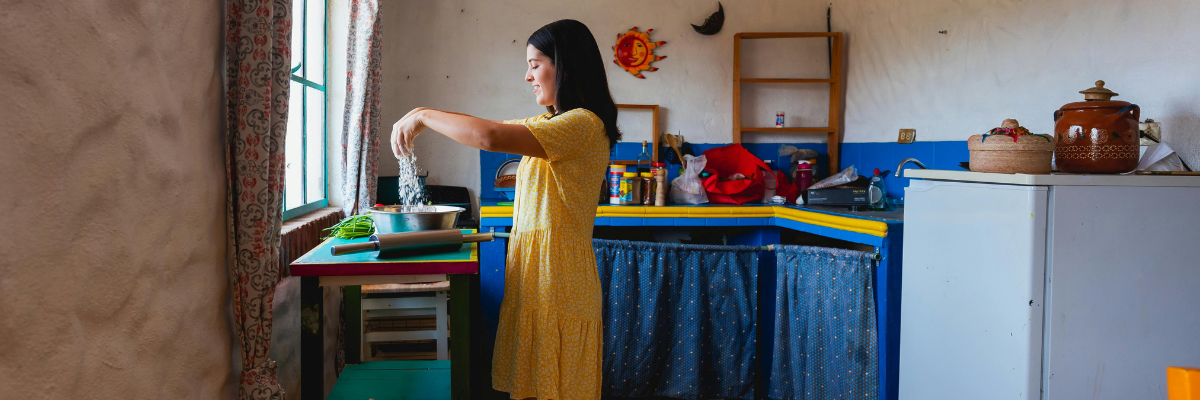
We all know salt can sneak its way into our diet, but let’s be real—sometimes it’s hiding in places you’d least expect. While a little sodium is essential for your body, too much of it can lead to high blood pressure, bloating, and all sorts of health issues. The kicker? A lot of the sodium we consume isn’t coming from that salt shaker on the table—it’s hidden in everyday foods that seem harmless. Here are 8 examples to keep an eye on:
Bagels and Plain Bread
 Photo by Alejandra Cifre González on Unsplash
Photo by Alejandra Cifre González on UnsplashSure, bread is a carb-heavy friend we all know and love, but did you know that even a simple plain bagel can pack in up to 500mg of sodium? That’s just the bread itself—not counting spreads, toppings, or fillings. It’s the same story with your go-to sandwich loaf. Even if it doesn’t taste salty, sodium is often added as a preservative or to enhance the texture.
Cottage Cheese

Photo by Photo By: Kaboompics.com
Cottage cheese may be a protein-packed snack, but its sodium levels can be shockingly high. Half a cup can have up to 400mg of sodium, depending on the brand. Even if you’re pairing it with fresh fruit, the salt content can creep up quickly. Opt for low-sodium varieties if this is your snack of choice.
Canned Vegetables

Photo by Laudia Tysara
Canned veggies might seem like a wholesome shortcut to your daily greens, but don’t let the “healthy” label fool you. A single serving of canned green beans or corn can have over 300mg of sodium—and let’s be honest, most of us eat more than a serving. Rinsing your canned veggies can help cut down on the sodium, or go for no-salt-added options.
Protein Bars
 Photo by Hybrid Storytellers on Unsplash
Photo by Hybrid Storytellers on UnsplashProtein bars are marketed as healthy snacks or meal replacements, but they often sneak in sodium to boost flavor or preserve shelf life. Some bars have up to 300-400mg of sodium—close to what you’d find in a small bag of chips. Always check the label, especially if you’re reaching for one after a workout.
Pancakes and Waffles
 Photo by American Heritage Chocolate on Unsplash
Photo by American Heritage Chocolate on UnsplashWho knew your breakfast favorites could be hiding so much salt? Even plain, frozen pancakes or waffles can have around 400mg of sodium per serving. Add syrup, butter, or other toppings, and you’ve got a salty-sweet combo that adds up quickly. Homemade versions with baking powder (instead of boxed mixes) can help keep sodium in check.
Salad Dressings
 Photo by Anna Pelzer on Unsplash
Photo by Anna Pelzer on UnsplashYour leafy greens might be the pinnacle of health, but drizzling on bottled salad dressing can instantly change that. Many store-bought dressings contain 200-300mg of sodium per tablespoon—and let’s face it, who stops at just one? Look for low-sodium versions, or whip up your own vinaigrette with olive oil, lemon juice, and herbs.
Flavored Oatmeal
 Photo by Melissa Di Rocco on Unsplash
Photo by Melissa Di Rocco on UnsplashYes, even your wholesome oatmeal isn’t safe. Instant oatmeal packets—especially the flavored kinds—often include salt as a flavor enhancer. One serving can sneak in 200-300mg of sodium, making your breakfast less innocent than you thought. Go for plain oats and jazz them up with fresh fruit and spices like cinnamon.
Non-Dairy Milks
 Photo by Sandi Benedicta on Unsplash
Photo by Sandi Benedicta on UnsplashThink almond milk is all about clean eating? Think again. Many non-dairy milks are fortified with sodium to improve taste and extend shelf life. Depending on the brand, a single cup can have 150-200mg of sodium—higher if you go for flavored varieties like vanilla or chocolate.
Now that you know where salt is hiding, there are ways to cut back without sacrificing flavor. For one, make the habit of reading labels. Even “healthy” foods can be sodium traps, so always check the nutrition facts, especially for packaged items. Another thing you can do is rely more on fresh foods like fruits, veggies, and proteins. Sodium loves to lurk in unexpected places, but with a little awareness and good choices, you can keep things balanced.











